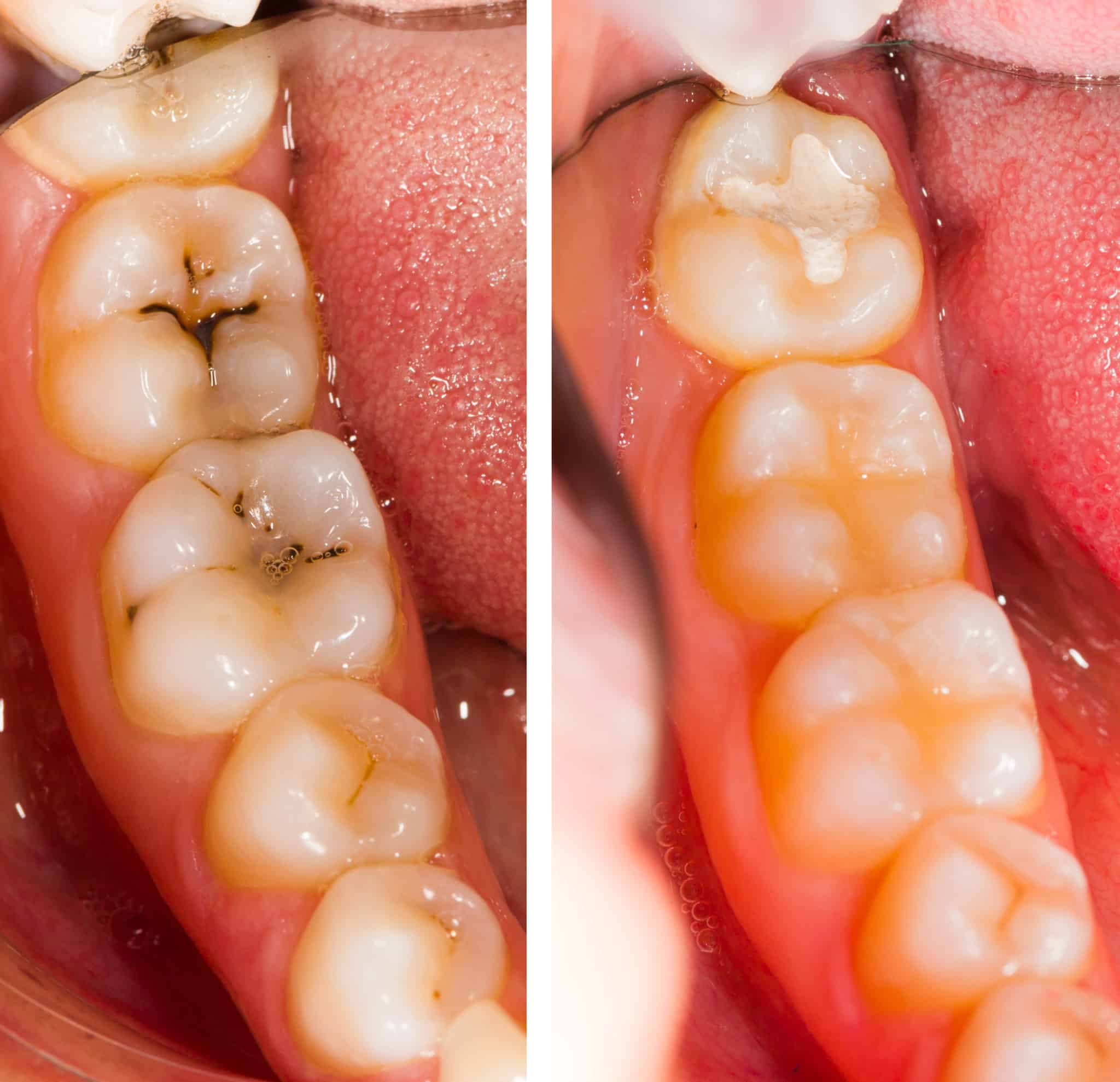A cavity is a hole inside your tooth, usually caused by decay. Dentists use fillings to restore the damage done from cavities and repair your teeth. There are several types, including silver and white fillings. Choosing between silver vs. white fillings often depends on where the cavity is located, price, and how extensive the cavity is.
Choosing a Tooth Filling: Silver vs White Fillings
What Are Silver and White Fillings?
 When the dentist finds a cavity that needs filled, he or she will often talk with you about your options. The most common types of fillings are silver and white. Silver fillings are made from a liquid metal alloy, primarily silver, tin and copper. White fillings are made from a ceramic and plastic compound. Both of these types of fillings have been used for decades, and have been shown to be a safe and effective way to restore teeth damaged by cavities.
When the dentist finds a cavity that needs filled, he or she will often talk with you about your options. The most common types of fillings are silver and white. Silver fillings are made from a liquid metal alloy, primarily silver, tin and copper. White fillings are made from a ceramic and plastic compound. Both of these types of fillings have been used for decades, and have been shown to be a safe and effective way to restore teeth damaged by cavities.
Silver vs. White Fillings: Compare and Contrast
These types of fillings are similar in many ways, and either are suitable for most types of cavities. However, there are a few difference, such as:
- Strength: Silver fillings are generally considered stronger than white fillings, though both are made to withstand biting, chewing and regular wear-and-tear.
- Placement: White fillings are made to match the color of your teeth, so they’re ideal for cavities in visible locations. Since silver fillings are slightly stronger, they’re ideal for fillings on back teeth.
- Price: Silver cavities are more common, easier to place and are generally cheaper than white fillings. However, both types of fillings can be applied safely and affordably.
How Do Dentists Fill a Cavity?
Though you may be understandably nervous about getting a filling, remember that this is one of the most common dental procedures in dentistry. Dentists use both silver and white fillings in very similar ways. Let’s take a closer look at this process:
Numbing Your Tooth and Gums
Regardless of the silver vs. white filling material used, numbing comes first. Before filling your tooth, the dentist will typically apply a numbing liquid to your tooth and the surrounding gums. Once your mouth is fully numb, the dentist will give you one or more shots of an anesthetic agent that completely numbs your mouth. Most dentists will leave patients for a few minutes to ensure their mouths are numb before proceeding.
Filling the Tooth
Once your mouth is numb, the dentist will use a metal tool to carefully remove any black or brown spots from your tooth and remove all traces of decay. The dentist then uses a small paintbrush to carefully fit the hole in your tooth with the silver or white filling material. Depending on the size and location of the cavity, the dentist may use brushes to mold the composite materials to your tooth to cover any cracked or jagged edges.
Alternatives to Silver and White Fillings
Besides silver and white fillings, there are also gold fillings, which are less common, but also a safe and effective option for restoring a tooth damaged by a cavity. There are also other alternatives to fillings in general. If the cavity damaging your tooth is severe, the tooth may not be able to support a filling. In these cases, you may need a tooth extraction and implant to replace the tooth.
Extractions and Implants
While dentists can use fillings to restore smaller cavities, a larger cavity may require more work. A larger cavity can actually eat through much of your tooth and the filling will not have enough support to be stable. If the dentist determines that your tooth has too much decay to support a filling, the tooth may require extraction. After numbing your tooth, the doctor will break and remove the old tooth. After your mouth has time to heal, the dentist can fit you for a new implant.
Do You Have a Cavity?
If you have a cavity, you should make an appointment with your dentist as soon as possible. If cavities go untreated, the bacteria will continue eating away at the tooth. If you’re uncertain which type of filing is right for you, ask your dentist about silver vs. white fillings. Both types of filings are safe and affordable. If you have questions, or you have tooth pain that you suspect might be a cavity, make an appointment at a dental office in Las Vegas today.
